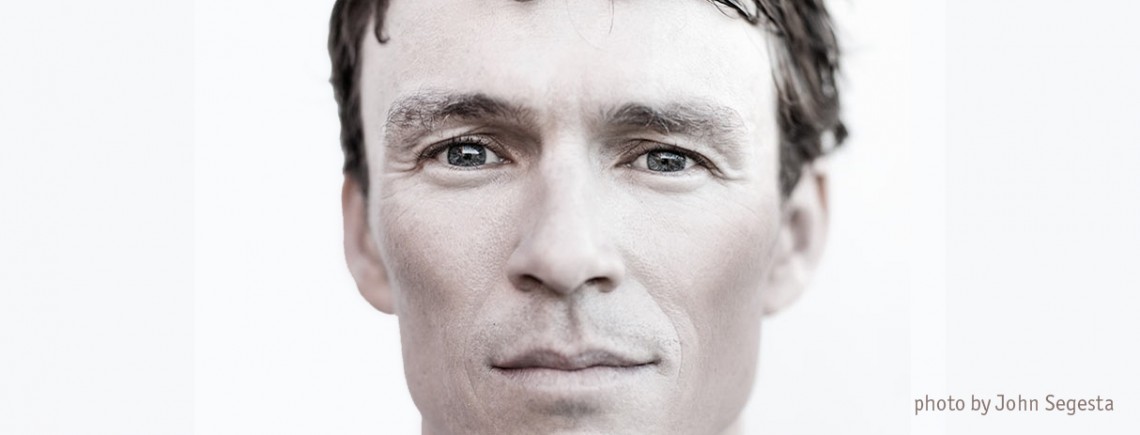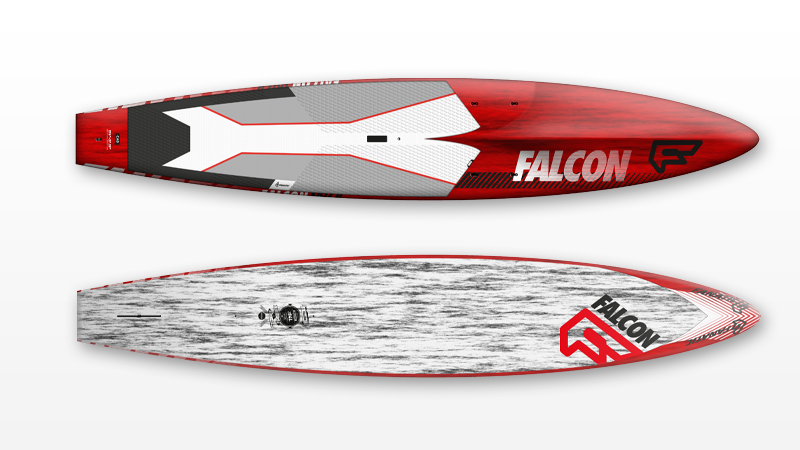Simon Whitfield on Outdoor Adventures, Being an Introvert, and His Love Affair with the Stand-Up Paddleboard
World-renowned triathlete. Four-time Olympian. Self-professed endurance junkie.
Simon Whitfield is fitness, personified. Although he says he’s slowed down since retiring from competitive sport and becoming a father, his pursuits, from promoting the notion of real fit versus gym fit and his boy-like enthusiasm for stand-up paddle boarding, reveal little sign of deceleration.
AHAALiving.com’s Malina Kaija sat down with Simon and got the scoop on this stage of his career – including how he stays authentic in a world of corporate sponsorships and the pressures that come with maintaining his personal brand – and life.
Malina Kaija: As an elite athlete, it must have been difficult to leave your sport professionally. How were you able to transition into everyday life after your 2013 retirement from triathlon?
Simon Whitfield: Physically I was fine, but I was really struggling mentally. I was still obsessing with having to train that much, but my body was gearing down. I would go through huge gaps where I wouldn’t train. I tried playing soccer, but injured myself right away from overworking myself. After I recovered I started playing indoor soccer once a week, starting as the alternate. I would literally text guys and beg them for their spot. Eventually they let me play regularly. Last week I scored five goals!
MK: Any revelations along the way?
SW: I was out paddleboarding last year, and there was a crazy storm. I paddled out to this lighthouse, not even one kilometre out, but it took me 50 minutes to get out there; I probably fell in 50 times. When I came back, I felt so invigorated and I figured out that I could play with nature in a competitive way. Except at the end of the day, she [nature] always wins.
MK: Being competitive by nature, do you tend to set physical or performance-related goals for yourself?
SW: Not any more. I started racing paddleboards last year and played with the idea of competing because I was still wired to the idea that I needed to fix the puzzle. I’m a scientist and engineer at the end of the day – an engineer without a degree – and I wanted to figure out how triathlons worked: break them down and figure out how best to train. It [his career as pro triathlete] turned out to be super fun and an incredible experience, but at the end of the day, it was just a way for me to solve the puzzle. So after trying to compete in paddling and winning a few races, I took a step back and thought, “What am I doing?” Now, my goals are adventures.
MK: You’ve been on some pretty wild stand-up paddling adventures. What got you interested in trying it?
SW: It was actually by fluke. I tried a friend’s crappy inflatable and thought, “Yeah, this is pretty cool.” I picked it up quickly, but I almost stopped doing it – then somebody lent me their race board and all of a sudden, it hit me: I can go stand on the ocean! So I took the board out to Trial Island, just off Vic [Victoria, BC], where I got pulled over by the coast guard last year because it has this insane current there. The lighthouse keeper sits with her coffee at the edge of the point and watches us. Sometimes there are 15 people watching from the beach and I get my little moment of “WOO! I still do something competitive.” I get to perform, but nobody knows who I am. They’re just thinking, “Who’s that lunatic off the point that’s going to freeze to death?”
MK: You have quite the collection of boards now. What’s your favourite board?
SW: Good question! It has to be my Fanatic Falcon 14-foot ocean board. It’s a super technical board. It’s only 24 inches wide, so if you’re not moving you fall in. If you get the thing moving and it’s downwind, you can literally catch waves three in front of you! I bought a Hobie Apex Pro: the fastest flat water board out there. Roy Henry Vickers, an Aboriginal artist in Victoria, is going to paint it as an oystercatcher. I can’t wait! I want to go touring on that board; it’s fast, sturdy, and you can drop it on a rock and nothing happens to it.
Hobie Apex Pro
MK: Beyond kicking around the ball and playing in the ocean on your paddleboards, what do you do to keep in shape?
SW: [Calgary-based competitive runner] Adam Campbell and I just started this idea called #OutdoorFit to encourage people to get outside. I think fitness should serve you practically; if there’s a hurricane and you need to get somewhere, you should be able to get there.
If an earthquake hit and you couldn’t run 20 minutes to get your kids, then you’re just not being responsible.
The gym is great and you can do some really specific stuff, but everybody should be getting outside and being active.
When people ask me what I recommend and how to make the time for keeping fit and active, I ask them if they have 20 minutes. That’s all the average person really needs. For example, I go to my daughter’s swim lesson, put on my headphones and make up a yoga routine. If people think I look silly, I don’t give a shit. I do squats, push-ups, planks, back extensions; I stretch and work on my mobility – all while watching my girls play. The other parents might think I’m crazy, but I see them and think, “Hey – I’m moving my body and encouraging my kids to get up and be active.” That’s what’s getting completely lost – you don’t need to be CrossFitting, you don’t need to be going to the gym; you just need to be a little bit creative.
MK: What does a week of training look like?
SW: I like to rotate what I do to keep it interesting. I run every day I can to Clover Point and Ogden point [Victoria, BC] and back. Adam Campbell and I set the record: 44 minutes. It can’t be over four km, but you’re running and scrambling up and down rocks. I run the first section, which is the warm-up. The second is for agility. The next section, I run every log that faces north-south; any log that faces east-west that I can pick up, I pick up and move. It doesn’t matter how far; just get it off the ground.
MK: That’s definitely creative!
SW: I do six hill repeats up the point, scrambling up and down. It’s so steep that you could actually slide the whole way on your ass. In the summer, after the hill repeats, I’ll swim across the bay; it’s about 35 metres and FREEZING cold. After the swim I start doing a series of log hops, which involves running to the beach, taking all the logs from one end and moving them to the other. Then move them back. There’s a crazy agility section that’s super sketchy. You can fall into the ocean if you’re not careful because it’s on the edge of a cliff. I then run to the lighthouse at the end of the point, touch the wall, and then run home. I started doing that four months ago and it’s changed everything.
MK: And that’s just one day?
SW: Some days I like to go to Beacon Hill Park with my kids. I throw my daughter up in the air while doing a burpee-like movement: I squat, throw, squat, throw. She loves it. I do push-ups while they run around the bush and back. Sometimes they walk really slowly for the last ten metres to make me suffer! I’ll also do hill sprints; I’m allowed to recover for as long as it takes for them to get up the hill. At the top I’ll do box jumps onto a sloped wall. Then we all walk back down together while our dog runs back and forth with us.
Simon paddling off the coast of Vancouver Island
Other days I paddle (SUP). On hard days I’ll downwind paddle, because it’s the best workout. I’m still recovering from my last paddle: 20-knot headwinds on the way out then I rocked it back with 25-knot tailwinds. It’s sketchy; I was seven km out at sea and if you fall out there in the ocean you are very alone. The waves are so high you can’t see anything. It’s just you, the board and your paddle.
MK: How do you stay centred and true to yourself?
SW: I stick to my guns. You just need to be authentic. If something makes you upset, it’s okay to speak up. Stop worrying about the consequences and do what you’re passionate about. I have never needed to conform and I think that’s because of being an introvert. People think I’m an extrovert, but I’m an introvert that knows how to play an extrovert. I need a ton of time alone to think on my own and get perspective. I think that having alone time, journaling, getting exercise and being with good friends gives you the ability to be authentic.
MK: What’s next for you? What’s your next big adventure?
SW: I want to go with Adam Campbell and run with our fly-fishing gear up a mountain, catch a fish, run back down, then cook it on the hood of a Land Rover! I’m also planning to take my girls to Discovery Island in the spring and paddle through the Chain Islands –there are about 150 seals living there. We’ll check out the eagle that lives off Chapman Island, and then head to where the current runs and walk the shore. There’s a wolf on one of the islands that’s lived there for 10 years; we’re going to camp out for a couple days and go find him. I can’t wait.
Are you an outdoor adventurer like Simon Whitfield? What are your most creative, outdoor regimes? Share your thoughts here, or on our Facebook and Twitter pages.
Originally posted March, 2015






